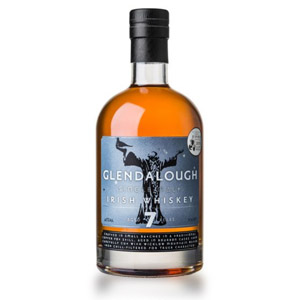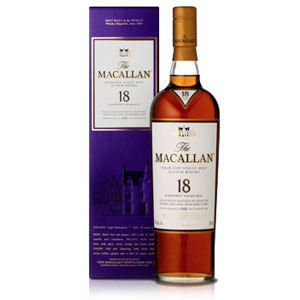Anyone who reads a few of my reviews of American “craft” whisky will be familiar with my distaste for paying $50 to $70 for 3 year-old whisky that only roughly competes with more established bourbons and Scottish single malts. Yes, American Single Malt as a category is enjoying a burgeoning awakening, but that doesn’t mean I want to pay double for something that’s not quite as good as what they’ve been doing in Scotland for centuries, just because it’s “local” and “grain to glass” and “craft”.
And then there’s Seattle’s own Westland, arguably one of the first “craft” American whiskies to attract international attention. Let me cut to the chase: If you haven’t tasted Westland yet, you are missing out, and you can’t properly assess the landscape of American Single Malt. Get a glass somewhere, spring for a bottle, or buy one of those three-in-one tasting sets of cute little 200ml bottles like I did. As far as my experience with the distillery has been so far, everything they make is excellent.
Westland does a few things differently, and the results are right in the glass. First, it’s not just “malted barley” like 99% of single-malt scotch. Westland uses a blend of 5 different barley malts: Washington Select Pale Malt, Munich Malt, Extra Special Malt, Pale Chocolate Malt, and Brown Malt. I can’t pretend to know the differences between all of those, but I do know that they refer to different brands of malted barley that are each at a different brewers’ roast level, or using a different malting/roasting process. Westland isn’t the only American distillery taking cues from beer brewing, but they’re doing it best. The distillery then uses Belgian Saison brewer’s yeast with a very long, slow fermentation. Note that Westland’s website is a trove of whisky-geek information. I’ll try to summarize:
The distillery uses process water from the Cedar River, and runs a pair of Vendome copper pot stills heated with steam coils. They fill new make into a combination of new, air-dried (not kilned) American Oak barrels at either #1 (heavy toast) or #3 char. They also use some first-fill ex-bourbon casks. The whiskies are currently aged a minimum of 3 years – although it’s worth noting that all of that new American oak doesn’t take long to mature malt whiskey, so it can’t be compared directly to the maturation length of single malts from Scotland. The whiskies are blended in batches using those various casks and filled at 46% ABV without chill-filtration or added coloring.
Nose: Oak-forward, with slightly tannic sap notes that are almost like pine resin. Dry – with very reticent sugars. A pleasant yeasty top note suggests sour ale or cider vinegar. After a rest in the glass it opens up with a little cherry and a dollop of pancake syrup.
Palate: Silky body. Again oak-forward, with lots of mouth-drying oaky tannins. After a minimal tongue burn, there is a dominant cereal note that very strongly suggests chocolate stout. The toasty barley is very slightly bitter (like bittersweet chocolate) and not quite acrid or burned (a blessing).
Finish: Medium-long. That chocolate note – now joined by roasted coffee bean – continues robustly into and throughout the finish. A little nuttiness – nougat or pecan – appears and fades slowly. Ends without any trailing bitterness.
With Water: The addition of several drops of water amps up the nose tickle without adding any new notes. The palate seems softer, but the chocolate notes are diluted. The finish is a bit more vibrant. I suggest trying it without the water and then add a little to see if it does anything for you.
Overall: The aroma begins a little shy and unpromising, but on the palate this whisky shines with chocolate and malt and oak in a potent balance. The experience if very like sipping a dark roast iced coffee with unsweetened cocoa powder in it. The finish is rock-solid and complete with all of the palate notes, and ends gracefully without any extra bitterness – a success.
If the nose were a little more in line with the rest, this would be a Must Have. As is, it’s just a Must Try (with a very strong recommendation that you make the effort), especially if you don’t currently have a high opinion of American Single Malt as a category. Westland is an education. And yes, it is indeed worth the $60-$70, although I really think the tasting set of 200ml bottles, if you see it, is a good way to pick your favorite from the core range. I do feel that it’s important to taste this “basic” version before the peated or sherry wood expressions to get a complete picture.









[…] Original Post Source and Credit: The Scotch Noob / The Scotch Noob […]
My of American single malt is non-existent. I’ve never even thought about having it. The way you describe this reminds me of what Glendalough 7 yr tastes like to me. Is that at all accurate?
I left out the word opinion
Westland has a lot more oaky flavors which make it seem ‘heavier’ than Glendalough. The Glendalough also gets more fruit flavors – specifically green apple or kiwi – while the Westland has more chocolate/coffee notes. It’s interesting how different whiskies can be while still both being single malts!
I’ve been drinking single malts for a long time now and I’m still amazed at how different they all taste. I think that’s what started my obsession in the first place.
I’m fortunate enough to live near Seattle and have been on to them for quite some time now. The flagship American Oak is awesome (and my favorite of the core range), but if you can get your hands on some Garryana…you’ll have a Must Have!
[…] my previous gushing review of Westland’s core American Oak expression, I tasted the other two members of the core range. This one uses the same 5-malt mash bill of […]
Bought a bottle on your recommendation, never having tried an American Single Malt. Very interesting whiskey. Seems to have the lushness/sweetness of a bourbon with the complexity & crispness of a single malt. I like the undertones of the chocolate malt. It adds a nice balance. Looking forward to trying the Sherry wood & the Peated.